A Budget Home Theater & PC Setup: 4K, HDR, UHD Blu-ray, and More
by Ganesh T S on December 26, 2017 8:30 AM ESTLocal Media Playback
Our typical HTPC testing flow involves playing back files encompassing a range of relevant codecs, containers, resolutions, and frame rates. A note of the efficiency is also made by tracking GPU usage and power consumption of the system at the wall. Over the last year or two, the focus has been on using Kodi and MPC-HC with its built-in LAV filters for benchmarking. Even though we have had non-HDR 4K clips for some time now in our test suite, we have not subject them playback at native resolution. In order to augment our test suite, we have added two files, a 4Kp25 HEVC HDR stream in a MKV container, and a 4Kp60 VP9 Profile 2 HDR stream in a WebM container.
Out of all the options we evaluated, the TCL 55P607's in-built Roku platform is the only one capable of handling Dolby Vision videos. However, when we tried to play back a sample file, the Roku interface stalled in the retrieving stage after the appearance of the Dolby Vision logo.
The TCL 55P607 Roku Media Player App - Unable to Handle Local Dolby Vision Files
Due to the absence of reliable open-source editing and decoding tools for Dolby Vision in the PC space, its testing with local media files will have to wait.
The Roku Media Player app continues to be a disappointment for users with anything other than the standard H.264 / HEVC-based camcorder files. The following recorded clip shows its failure with some interlaced MPEG-2 and H.264 clips in TS containers. VC-1 is also not supported.
On the plus side, we have automatic switching to HDR for local files which have HEVC HDR content. On the othr hand, a VP9 Profile 2 HDR clip did not generate the mode switch.
We tracked the power consumption of the TV while the Roku interface tried playing back the various files in our test suite. It was not much of a surprise to find that Roku fails to play back many of the streams. The graph segments below corresponding to the files that didn't play back are just the display remaining idle in the Roku USB Player interface.
The NVIDIA SATV supports all files in our test suite except the one encoded in VP9 Profile 2. With Kodi, we even see the HEVC HDR file being decoded and sent to the display with the appropriate mode switch.
The NVIDIA SHIELD Android TV Supports HDR Playback with Local Files
The power consumption of the SATV was tracked during the playback of each file in our test suite using Kodi 17.6. The segment corresponding to the VP9 Profile 2 file is just the duration for which the audio track was decoded and the Kodi UI remained idle.
Moving on to the PC space, we first compare the DXVAChecker outputs for the three systems. The Zotac EN1080K with its GTX 1080 GPU does not support hardware decoding of VP9 Profile 2 videos. Even if a HDR stream were to be available, the system plays back only the non-HDR versions with the desktop in HDR mode.
The Absence of VP9 10-bit Profile 2 Decoding in the GTX 1080 is the Only Odd Spot (from L to R: ASRock Beebox-S 7200U, Zotac ZBOX MAGNUS EN1080K, and the Intel NUC7i7BNHX1)
We found the native Microsoft Movies & TV app to be capable of playing back HDR videos with the desktop in HDR mode. A comparison of playback using two different players in that mode is shown below.
However, the playback of HDR files in non-HDR mode using the Microsoft Movies & TV App results in messed up colors. As such, we don't recommend the Movies & TV app for HDR file playback under all circumstances.
It is possible to use the madVR renderer in conjunction with a suitable player to shift the display to HDR mode independent of the OS setting. It is also supposed to bring the display back to the original state when exiting. We tested it out with MPC-HC and madVR v0.92.10 on the Zotac EN1080K. On the KBL-U systems, using madVR as the renderer resulted in evident dropped frames irrespective of the setting. On the Zotac EN1080K, we found that the latest NVIDIA driver release (which we absolutely had to use for Netflix 4K playback) seemed to have some issues with the restoration of the previous mode. With certain settings, the colors seemed to get crushed significantly after madVR triggered the mode change.
In fact, the only reliable combination in which we could get playback of the files in the appropriate mode was to set the OS toggle for HDR, and allow madVR to pass through the HDR metadata directly to the display (something that the madVR author specifically mentions as unsuitable for purists). We do not have automatic mode switching or even identification of HDR when using Kodi (as of v17.6). With madVR and MPC-HC, it is possible, but the consumer experience may vary.
In our opinion, HDR local media playback is yet to reach a stable state with commonly used software combinations. CyberLink's PowerDVD 17 also supports automatic HDR mode switch for playback of local files on Intel GPU-based systems. We found that it worked well in both of the KBL-U PCs, but, PowerDVD unfortunately refused to play back the VP9 Profile 2 files on those systems.
The power consumption of the three PCs during the playback of each file in our test suite using Kodi 17.6 was recorded. The same was done using the Microsoft Movies & TV app also, but, we found significant power consumption change (up to 10W at the wall) when the control overlay appeared on the screen. As such, we believe that the Microsoft Movies & TV app is not a reliable way to determine media processing efficiency of any system.
A similar graph for the madVR playback case in the Zotac ZBOX EN1080K (with OS HDR toggle set and madVR configured for HDR passthrough in full screen windowed mode) is presented below.
The power consumption numbers were also graphed for the PowerDVD playback case using the two KBL-U systems.
In general, we find that the Zotac system consumes a lot of power, but, it also performs a lot better compared to the KBL-U systems when advanced HTPC requirements like madVR rendering are considered. The HDR ecosystem is just getting started and we are waiting for things to reach a more matured state before doing a detailed analysis of the playback of local HDR files in PCs.


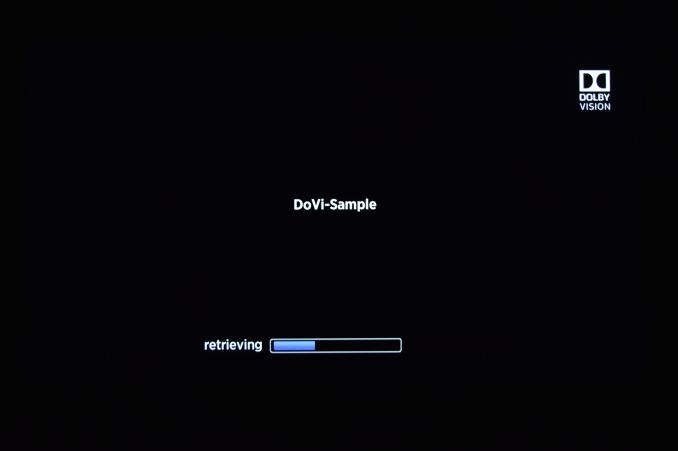

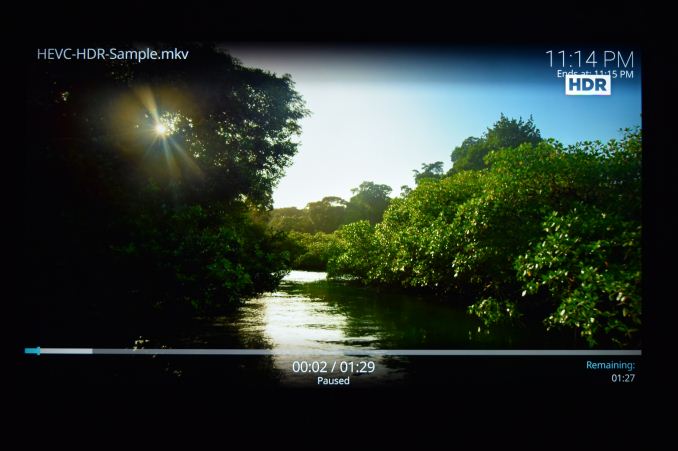
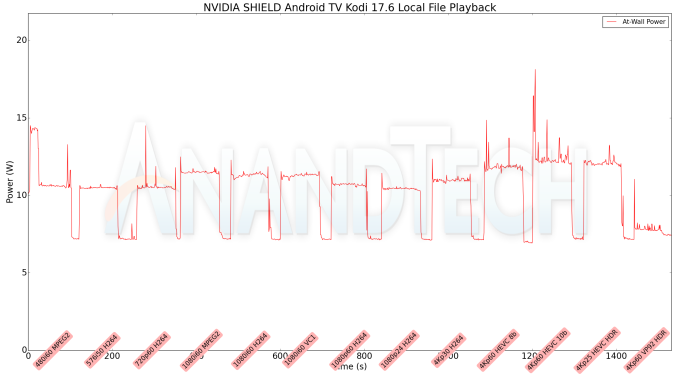
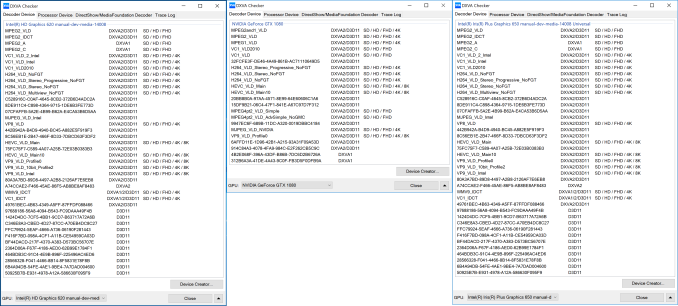
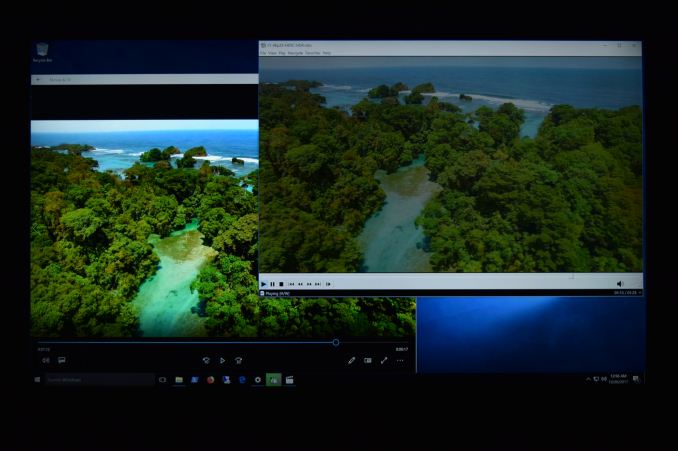
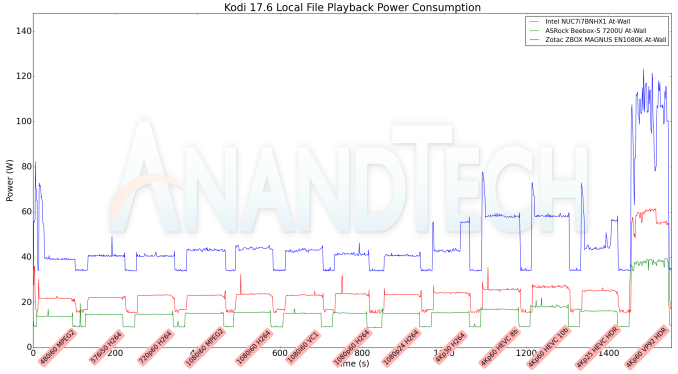










191 Comments
View All Comments
Doomtomb - Monday, January 22, 2018 - link
I guess I'll throw my two cents in because everybody is jumping in with their own opinions on Home Theater. (there is no right answer to satisfy everybody).I'm 28, just moved into my first house, trying to do HT right, on MY budget. My TV crapped out on me so I put my money into an OLED during Black Friday. No regrets, Zero. The picture quality is hands down better than my 2015 Samsung LED-LCD. It is significantly noticeable, by everybody that views it. Second, I spent some money on 5.1 speakers and subs about 7 years ago. Can you really count that cost? Maybe ~$1000 including the receiver. Speakers are by Polk Audio, could be better, but just fine for entry level. AV Receiver is not super fancy but is reputable brand, Marantz, from 2012. Got it on craigslist with some speakers at a super deal. Thing sounds beautiful, has all the Dolby codecs minus Atmos. I find myself only wanting audio out from my TV. If you need 4K picture, plug the device into the TV and output the audio with optical. Sound quality doesn't change much over the years, only features. Keep the smart features on your TV or set-top box. Keep the audio on your receiver, heck you could go with just an Amplifier but you probably want surround sound so you need processing = receiver. Do not overspend on that device, they become outdated VERY quickly.
bella44 - Monday, June 4, 2018 - link
Xbox is a nice option. Now we can also install apps like terrarium tv on Xbox to watch movies and Tv shows for free. Get terrarium tv from https://terrariumtv.io29a - Tuesday, June 12, 2018 - link
Rather than getting an XBox they should download a pirated copy. That's the only way the studios will take notice.RiZad - Tuesday, December 26, 2017 - link
" Further research revealed that the Tegra K1 SoC in the SATV does not support VP9 Profile 2" The Shield TV never came with the K1, the 2015 and 2017 version both have the X1RiZad - Tuesday, December 26, 2017 - link
https://www.anandtech.com/show/9289/the-nvidia-shi...ganeshts - Tuesday, December 26, 2017 - link
Thanks. I fixed that typo.trane - Tuesday, December 26, 2017 - link
Vega supports HDCP 2.2. So is it just the driver we are waiting for? Nvidia released a driver for it much later, too.ganeshts - Tuesday, December 26, 2017 - link
Still looking for a compact machine with Vega GPUs....Chaser - Tuesday, December 26, 2017 - link
Linux based Myth TV PVR server back end. (Works great with any decent CPU/RAM) HDHome Run cable converter box. (Free) Comcast Cable card. Amazon Fire TV w/Kodi plug in to manage my channels, lineups, recordings. Pure bliss and I save a lot of money.ddrіver - Tuesday, December 26, 2017 - link
That would just be too budget... Plus, nobody sponsors articles with "ghetto" solutions.